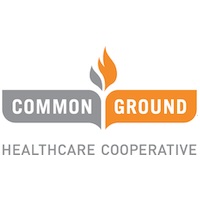
UW teams up with NBA and GE Healthcare to study hamstring injuries
Madison –The National Basketball Association (NBA) and GE Healthcare have awarded a $300,000 grant to the University of Wisconsin School of Medicine and Public Health (SMPH) to identify risk factors for hamstring injury (HSI) in athletes and to evaluate new imaging methods that could improve post-injury prognosis.
The research, being led by Bryan Heiderscheit, SMPH professor of orthopedics and rehabilitation, was one of four projects selected from investigators across the globe to address myotendinous injuries.
“The knowledge gained from this study will be used by sports medicine clinicians and coaches to provide better care for athletes at risk for hamstring injury by helping prevent injury and assisting in returning athletes to sport with more complete recovery,” said Heiderscheit. “We believe this research will provide the most detailed understanding of the processes affecting muscle function and hopefully improve our ability to evaluate, treat and prevent these types of injuries in both elite and recreational athletes.”
Hamstring injuries are among the most common musculoskeletal injuries in people who participate in sports that involve running and sprinting, such as basketball, football, and soccer. They can result in prolonged time away from sport. Persistent symptoms, slow healing, and a high rate of re-injury contribute to make hamstring injuries a frustrating and disabling injury for athletes and a challenge for clinicians to treat. The injuries occur at an even higher rate among middle-aged and older athletes who are weekend warriors or who don’t regularly participate in sports.
Researchers will assess Division I collegiate men’s and women’s basketball, soccer, track, and football teams over multiple years. All athletes enrolled in the study will complete pre-season hamstring strength and endurance testing, along with other sport-specific measures. The athletes will be monitored by athletic trainers, who will record injuries and sports participation in both practices and games. Those who sustain HSI will undergo a clinical assessment at the time of injury along with magnetic resonance imaging (MRI) and ultrasound examinations. The complete series of tests and performance measurements will be repeated following a complete rehabilitation program and then again 12 weeks after the athletes have returned to their sport.
“Myotendinous injuries are a common issue among basketball players at all levels of the game – from NBA players to the athlete joining a local pick-up game,” said Dr. John DiFiori, the NBA’s director of sports medicine. “While there are prevention programs prescribed for varying levels of play, we are working to increase our understanding of the best techniques for clinical assessment and choices of imaging modalities to improve health outcomes and limit the impact on athletic performance for athletes of all levels.”






























.jpg?bwg=1612548324)